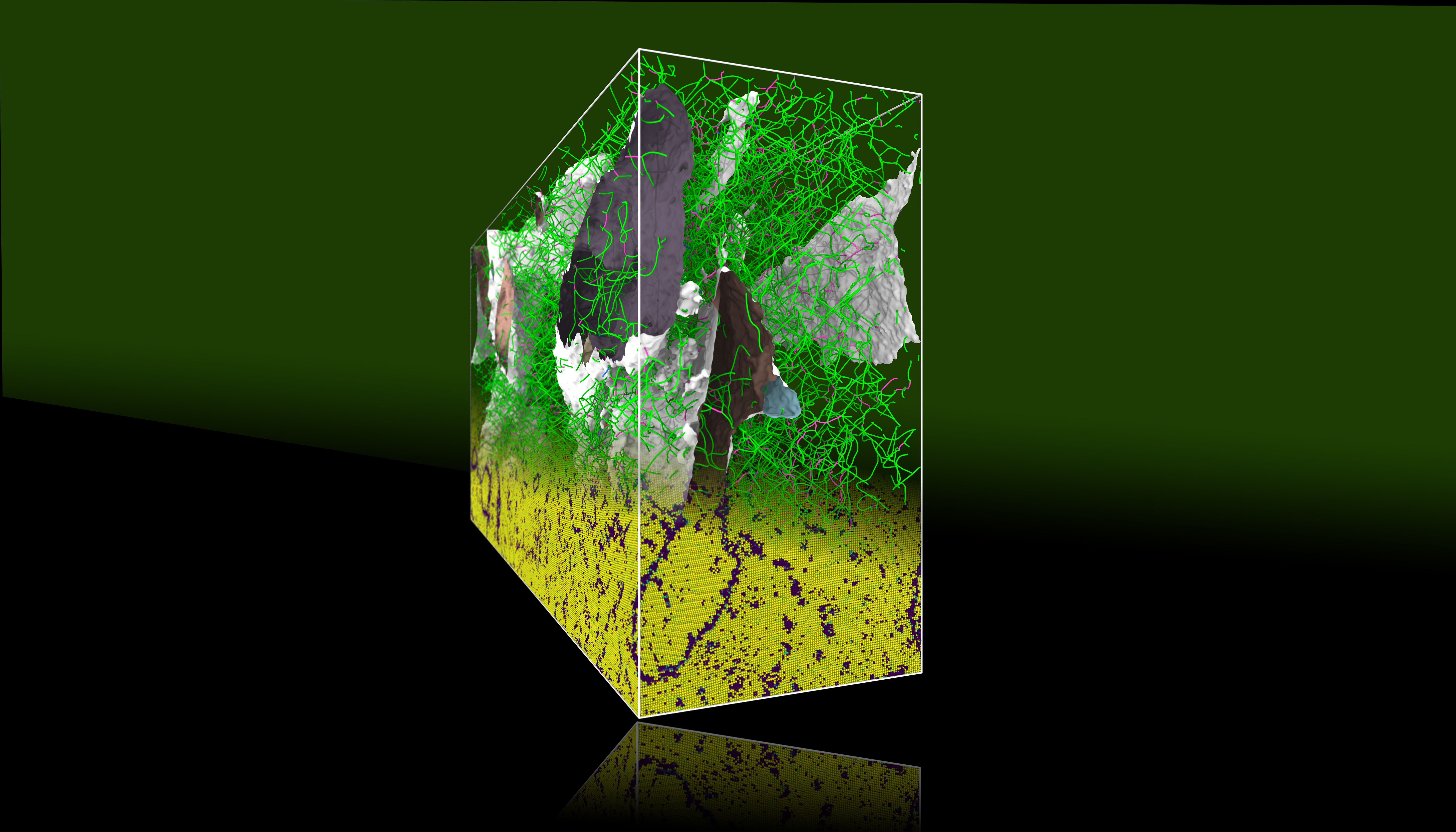To solve a 100-year puzzle in metallurgy about why single crystals show staged hardening while others don’t, Lawrence Livermore National Laboratory (LLNL) scientists took it down to the atomistic level.
The research appears in the Oct. 5 edition of Nature Materials.
For millennia, humans have exploited the natural property of metals to become stronger or harden when mechanically deformed. Ultimately rooted in the motion of dislocations, mechanisms of metal hardening have remained in the crosshairs of physical metallurgists for more than a century.
The team headed by LLNL materials scientist Vasily Bulatov performed atomistic simulations at the limits of supercomputing that are sufficiently large to be statistically representative of macroscopic crystal plasticity yet fully resolved to examine the origins of metal hardening at its most fundamental level of atomic motion. The simulations were performed on Vulcan and Lassen supercomputers at Livermore and Mira supercomputer at Argonne Laboratory Computational Facility.
The root causes of metal hardening remained unknown until 86 years ago, when dislocations —curvilinear crystal defects made by lattice disorder — were proposed to be responsible for crystal plasticity. Despite direct causal connection between dislocations and crystal plasticity being firmly established, no team has observed what dislocations do in situ — during straining — in the bulk material.
“We relied on a supercomputer to clarify what causes metal hardening, Bulatov said. “Instead of trying to derive hardening from the underlying mechanisms of dislocation behavior, which has been the aspiration of dislocation theory for decades, we performed ultra-large-scale computer simulations at a still more basic level — the motion of atoms that the crystal is made of.”
The team demonstrated that the notorious staged (inflection) hardening of metals is a direct consequence of crystal rotation under uniaxial straining. At odds with widely divergent and contradictory views in the literature, researchers found that the basic mechanisms of dislocation behavior are the same across all stages of metal hardening.
“In our simulations we saw exactly how the motion of individual atoms translates into the motion of dislocations that combine to produce metal hardening,” Bulatov said.
Other LLNL scientists include Luis Zepeda-Ruiz, Tomas Oppelstrup, Nicolas Bertin and Nathan Barton. Alexander Stukowski (a former LLNL postdoc) from Technische Universität Darmstadt Germany and Rodrigo Frieitas (a former LLNL graduate student) of the University of California Berkeley and Stanford University also contributed to this work.
The research was funded by the National Nuclear Security Administration’s ASC program and Technische Universität Darmstadt.
